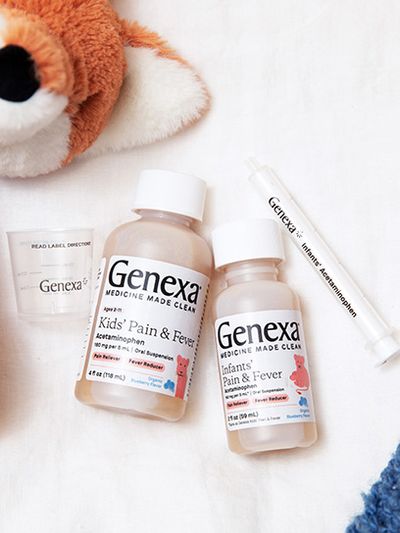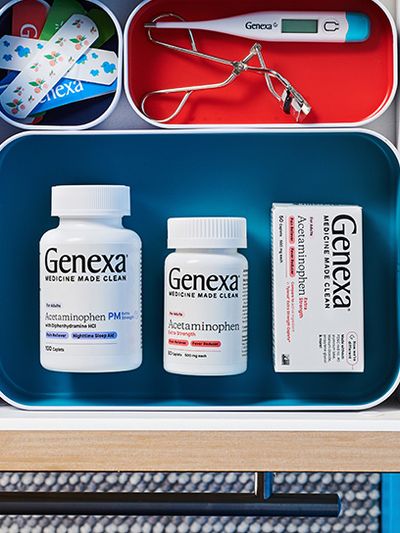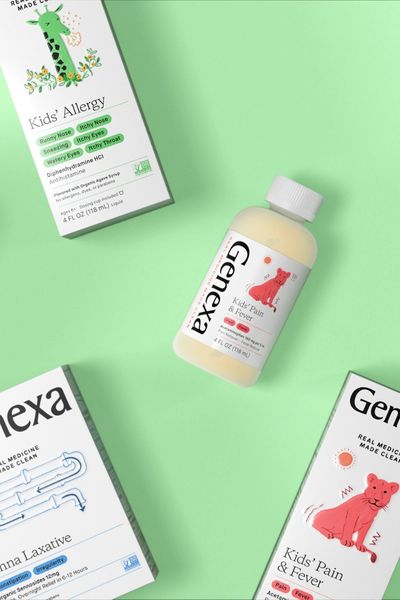What Is The Best Nasal Spray For A 2 Year Old?
How To Soothe Your Toddler's Nasal Discomfort
Written by Dr. Nelli Gluzman - Genexa Healthcare Provider & Partner on August 24, 2021
Medically reviewed by Camille Freking, MS Pharmacology
It can be stressful to hear your toddler congested and having difficulty breathing due to a stuffy nose. Luckily, there are several ways to treat a stuffy nose at home, including using a nasal spray. This article will take a close look at the best nasal spray to purchase for your congested two-year-old.
Congestion in Toddlers
When your toddler has a stuffy nose, the tissues lining their nose have become swollen. This leads to the uncomfortable feeling of being unable to breathe deeply in and out of the nose. The swelling in the tissues is a result of inflamed blood vessels. Nasal congestion can make it difficult to sleep. It can often be caused by allergies or, in more severe cases, sinus infections.
Usually, congestion is not a sign of a more serious illness and can be treated at home. However, if you are concerned about your toddler’s health or have questions about how to best care for them, it is a good idea to call your doctor.
You should also call your doctor regarding your child’s congestion if:
- Their symptoms last for two weeks or more
- They have a severe cough along with the congestion or their cough sounds like a bark
- Your toddler is breathing fast and has a fever and cough
- Your toddler has ear pain
Causes of Congestion
Congestion in toddlers can be the result of colds, flu, or allergies. Usually, the common cold and flu are caused by nasty viruses which unfortunately means that antibiotics won’t help your little one feel better.
Thankfully, there are several methods you can try at home to help manage symptoms while their body fights off the virus.
Common Cold
Although they are relatively harmless, colds can be disruptive and uncomfortable. Usually, colds go away after a week, but symptoms may last longer for children.
On average, children can catch anywhere from 6 to 10 colds per year while their immune systems are still developing. Children are also more prone to colds because they spend a majority of their time at school or in daycare, environments where germs are abundant and easily transmitted from one child to another.
There are several different viruses that cause colds. These viruses can lead to inflammation in the lining of the throat and nose. This inflammation can lead to symptoms, such as congestion and a sore throat.
Alongside congestion, other common symptoms of a cold include cough, runny nose, and a general feeling of being rundown.
For the most part, medication is not necessary to treat a cold because your immune system can fight off the virus. However, over-the-counter medication may be helpful for relieving symptoms.
Flu
Another common cause of congestion in toddlers is the flu, which is caused by the influenza virus.
The flu is a respiratory illness that is caused by specific influenza viruses which target the nose, throat, and lungs. It is highly contagious and can lead to illness and symptoms that range from mild to severe. Unlike a cold, the flu usually comes on suddenly and causes more severe symptoms.
Symptoms to look for in your child that might indicate whether or not they have the flu are:
- Runny or stuffy nose
- Muscle or body aches
- Sore throat
- Cough
- Fever or chills
- General fatigue
- Headaches
- Vomiting and diarrhea
Allergies
Perhaps the most common cause of congestion in toddlers is allergies. Allergies are simply the body’s reaction to a substance, food, or environmental object that it has falsely identified as an invader. Anything that triggers an allergic response is known as an allergen.
Infants and toddlers can develop allergies for a number of reasons. However, the likelihood of a child experiencing an allergic reaction is often hereditary, meaning the chances of experiencing an allergic reaction are higher if both parents have allergies. Oftentimes, infants can experience food allergies, and after about a year or so, they may begin to develop environmental allergies.
Common symptoms of environmental allergies include itchy nose and eyes, congestion or runny nose, coughing, sneezing, and asthma. There are a wide variety of environmental allergens. The most common causes of allergies in toddlers are dust mites, outdoor pollens, molds, pets, and cockroaches.
How Do I Find the Cause of My Toddler’s Congestion?
In order to properly treat your toddler, you have to determine what is causing their congestion.
One helpful way to determine the cause of your toddler’s congestion is the color of their mucus and nasal discharge. Usually, if your toddler’s discharge is clear and watery, your child is likely experiencing allergic rhinitis. The mucus caused by a viral or bacterial infection may turn white, then green or yellow for a few days before it becomes clear again. A change in color typically indicates that the immune system is fighting off an infection.
If you think your child’s congestion is a result of allergies, you may need to take them to a doctor to receive an allergy test. An allergy test is helpful because it can tell you exactly what your child is allergic to so you can better prepare them to avoid certain allergens.
Outside of the common cold, flu, and allergies, your child’s congestion may be the result of a piece of food or foreign object stuck up their nose. If this is the case, you should visit an emergency room immediately to have it removed. It is never advisable to remove anything other than mucus from your toddler’s nose.
If you are unsure of the cause of your toddler’s congestion, it can be helpful to talk to your doctor. Knowing the cause of their congestion will allow you to treat it effectively in order to get your toddler back to their normal, healthy self.
Treatment Options
Thankfully, there are several ways to treat congestion at home. This section will review the most effective ways to treat your toddler’s congestion.
Inhale Steam
Breathing moist, steamy air can help loosen the mucus that is stuck in your child’s nasal passages. You can either run a hot shower and have them stand in the bathroom, use a humidifier at night, or simply have them hold their head over a pot of hot water.
If you want to try using a humidifier, make sure that you clean it regularly. If you do not clean your humidifier regularly, you run the risk of spreading mold spores in the air which can make them sicker.
Nasal Aspirator
If your two-year-old does not know how to blow their nose, it might be beneficial to use a nasal aspirator or bulb syringe on them. This device has a blunt tip that is attached to a bulb on the end. When you create a suction with the syringe, it pulls any loose mucus out of your child’s nose and into the bulb.
Nasal Spray
Another treatment method that you can try for your congested toddler is a saline nasal spray. The benefit of this nasal spray is that it rinses the nasal canal and helps to clear the thick, stubborn mucus that does not come out with a nasal aspirator.
Additionally, saline nasal sprays add moisture to your child’s nasal passageways which helps to reduce inflammation and irritation. Saline can also remove pollen from the nose, which might provide immense relief to small children with environmental allergies.
What is the Best Nasal Spray For a 2-Year-Old?
The best nasal spray available for a toddler is a saline nasal spray. Saline nasal sprays are the best option for toddlers because they are effective but have no active ingredients or medications that might be harmful to young children. The only ingredients in saline nasal sprays are water, sodium chloride, and any other flavoring agents used to make the taste of the spray less strong.
When looking for a nasal saline spray, it is important to find one that is organic and free of parabens and fillers. This is important because manufacturers may add unnecessary, potentially harmful ingredients to saline nasal sprays.
The best time to use nasal saline sprays for the prevention of allergy symptoms is right after going outside and right before going to bed. When using a nasal spray for congestion caused by a cold or flu, it is best to simply use the spray as needed.
Conclusion
Congestion in toddlers is usually caused by a cold, the flu, or some type of environmental allergy. Although congestion is uncomfortable and can disrupt your child’s sleep, it is usually not a cause for concern.
You can normally treat your child’s congestion at home with steam, a nasal aspirator, or a nasal spray.
The best nasal spray for a 2-year old is a saline nasal spray because it is a natural, simple way to rinse out your child’s nasal passages. The saline can also loosen thick mucus and reduce swelling in the lining of the nose, both of which will make the symptoms of congestion more manageable.





